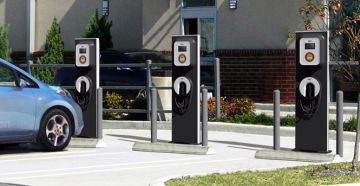
Since hitting the mass market about five years ago, electric vehicles have failed to take off, largely, experts say, because a robust network of public charging stations has not been built.
Car companies, retail chains and members of an infant charger industry have announced partnership after partnership to build the stations, but their number still falls well short of what is needed to nudge millions of drivers into making the switch, analysts say.
But now, if major electric utilities have their way, that could change.
In several regions, utilities — big companies experienced in financing, building and managing power infrastructure as well as selling electricity — are getting into the vehicle charging business.
Their goal is nothing less than making the electric car a viable alternative for millions of consumers and, in the process, helping shore up their own flattening business of supplying electricity.
In Kansas City, Mo., for example, the main utility is building a network with more than 1,000 charging stations for the metropolitan area.
In California, Pacific Gas and Electric recently became the last of California’s three big utilities to file a proposal with regulators that would allow it to install 25,000 public chargers — costing $654 million — in a state that has about 6,300 public chargers, at about 2,000 stations. In all, three major utilities envision building as many as 60,000 chargers in California in the coming years.
Nationwide, there are about 9,000 public stations, with about 22,900 chargers, according to the Energy Department.
Although California leads the nation in electric vehicle sales, with about 40 percent of the market, it is under pressure to meet aggressive goals that would require 100,000 chargers that are faster than traditional home outlets — enough to support one million vehicles — by 2020.
For the utilities, whose revenue is being squeezed by slowing growth in electric demand and, especially in states like California, the explosion in residential solar power, the charging business represents a potential boon.
To see the original article go to NY Times.




